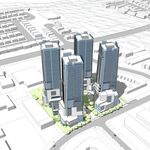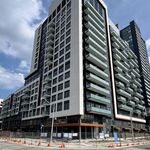My idea is not to actually create a hub at Pearson, but to decentralize that hub. When I said "mobility hub", I was actually referring to something that Metrolinx coined to describe a location where two or more higher-order transit lines meet (although Pearson does and will continue to act as a hub where various transit agencies' routes converge for the foreseeable future).
See here for more information about what a mobility hub is. (Not exactly sure why they have a post-makeover picture of Downtown Kitchener here, but eh.)
A network of mobility hubs is more akin to a lattice than a hub and spoke-style system, and I would much rather have a grid of routes than be forced to transfer at some arbitrary point. And if I do have to transfer at an arbitrary point, at least I'd like the route to be direct. To me, Pearson is just as much of an arbitrary point as Malton.
The idea was to decentralize the Pearson node to Renforth and Malton gateway stations in order to improve overall network resiliency and decrease unnecessary run time on vehicles.
If you make the visual style of the twin gateway hubs at Malton and Renforth very similar to that of Pearson's Terminal 1, include baggage-checking and wayfinding services, put some airport staff in there, and buy trains with level boarding that makes it very easy to roll luggage on and off the platform at Malton, you can probably trick a lot of people into thinking that they have entered the Airport when they actually haven't. Disney does a lot of this type of thing when they design their queues, they make waiting in line part of the entertainment. You may think I'm a bit out to lunch here,
but this actually is in reference to something.
Now I'm not saying we should turn the people mover into an amusement park ride (even though that would be totally awesome

), but when the alternative to arriving at Pearson is driving on a semi-congested freeway, or getting on a GO bus, it's prudent to put in that little bit extra into a people mover to make it a better passenger and customer experience.
Remember, the Air-Rail link would still exist for trips inbound/outbound from Toronto Union, and with a potential for frequent service on this route (both express and local), it would still be well used, even if it would require a transfer at Union for some.
I guess in the end, my main opposition to running a HSR line through the airport to Terminal 1 is the cost;
The western leg is straightforward enough, as it is pretty much a straight jog across airport grounds to Terminal 1 with one grade crossing. However, connecting the eastern leg back to the Georgetown Corridor would be a challenge to engineer with the hydro corridor, Mimico Creek, 2 highway crossings, and a birdsnest of highway ramps coming off the 409. I just don't see the point of spending that much money on something when a reasonable alternative is feasible at 1/6th the cost, and when a through route would make a previous Union-Pearson link solution obsolete.






